Shoe Material Symbols – What Do They Mean?
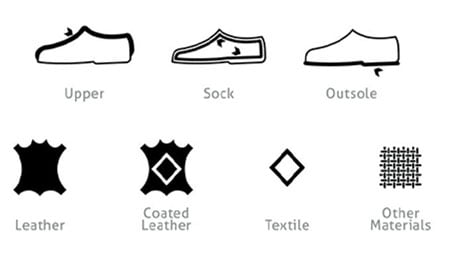
Have you ever wondered what those shoe signs symbols stickers that come with the shoes mean? Understanding shoe material symbols is the key to knowing exactly what your children’s shoes are made of—whether it’s leather, textiles, or synthetic materials. Many parents want to avoid animal products and choose vegan-friendly shoes instead. The good news is that every shoe comes with a label breaking down its construction, making it easy to spot which materials were used. Let’s decode those symbols so you can shop confidently and make the best choices for your kids’ feet—and your values!
Figuring Out What the Shoe Material Symbols Stand For
Let’s dive into what those shoe symbols really mean! A typical shoe label is organized into two columns and three rows. On the left, you’ll see the three main parts of the shoe, and on the right, you’ll find the materials used for each part.
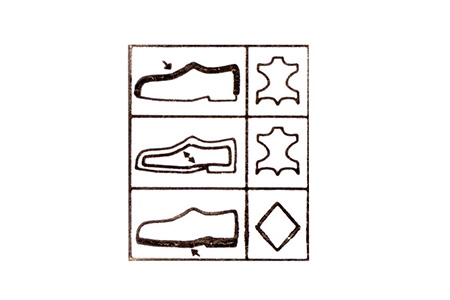
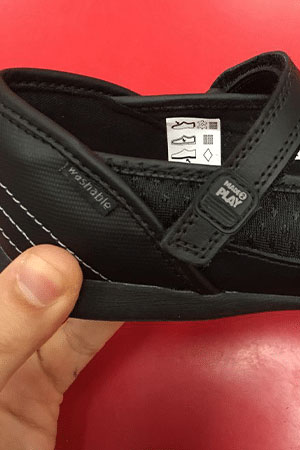
Let’s start by describing the shoe symbols in the left column.
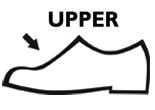
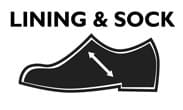
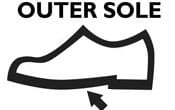
Now, let’s describe the shoe symbols in the right column.

Leather: This symbol means that the skin of an animal has been used to make the shoe. This symbol refers specifically to leather, but keep in mind that there are many kinds of leather, such as nubuck and suede. Did you know that for a shoe to be classified as genuine leather, a minimum of 80 percent of the shoe must be made from leather?

Textile: This symbol means that a fabric has been used. If you are looking for an animal-friendly shoe, this is the sign you want to look for! The symbol represents all man-made or natural materials.

Other materials: This symbol refers to the outer sole of the shoe which is a man-made material. Some of the materials used for the sole of the shoes are PVC (plastic), wood and rubber. This symbol also means animal-free materials.

Coated leather: This symbol refers to a surface layer of a chemical such as polyurethane that is applied to the grain side of the leather. This material makes the shoe much cheaper than a genuine leather shoe and has a consistent surface finish. Some of the main disadvantages of coated leather are that it doesn’t look or feel like genuine leather, it doesn’t breathe as well, and it is less flexible.
Are You Looking for Vegan Shoes for Your Children?
Nowadays, most footwear is made out of animal skin, and I understand why many people will refuse to use products containing any part of the animal body. Finding a pair of shoes marked vegan is not an easy task.
How can you tell if your kids’ shoes have been made from animal-free-materials? If the label says either “synthetic’”, “man-made materials”, “textile”, or “other materials” then you should feel confident that no animal skin has been used. Just make sure the material icon alongside the shoe icon on the label doesn’t have the leather symbol.
I do have to warn you that buying shoes made out of synthetic materials can bring many problems to your children’s feet. These shoes tend to be poorly made, which leads to the shoe falling apart faster. Shoes made out of synthetic materials also tend to make your kids’ feet sweat a lot more, which can create a myriad of problems for their feet.
Personalized Shoe Recommendations
Selecting the right shoes is not just about materials; it’s also about fit. Every child’s foot is unique, and finding the perfect pair involves considering foot shape, size, and any specific conditions. As a dedicated shoe fitter, I offer personalized shoe recommendations based on your child’s foot shape and needs. Feel free to contact me directly for specific vegan shoes for your child based on your child’s foot shape.

hi there is a mistake about the materials picograms, exchange textile and other material
Hello Li,
Thank you for pointing that out, can you be more specific about where the mistake is?
Hi, I should admit that before reading your article I have never heard about vegan shoes. Now I know what you mean, but still I am not sure I would choose a textile shoe for a toddler in the rainy country I live in. I prefer my kids shoes and feet to be dry.
My mum, when I was a kid, always bought us shoes made of leather. These shoes are very comfortable and soft.
But I am open to any suggestions what might be best for my kids to wear and would come back to your site again.
All the best.
Hello Ellie,
The purpose of this post is to inform parents about what the shoe symbols actually mean. If you are looking to find what I believe are the best shoes for kids in the market right now, I wrote a post about them: The Best Kids Sneakers – Learn About The Best Shoes For Children Ages 3 Through 10
Let me know if you have any other questions!
Wow, Juan, I had no idea there was so much technical information about children’s shoes. I really liked your advice about getting your children’s feet measured to know the correct size to buy. That’s extremely useful information and I will definitely be taking your advice. Thank you for sharing such helpful information!
Warm regards, Claire
Claire,
Getting the right shoe size for our kids’ is not an easy thing to do, if you don’t know how shoes are suppose to fit. It is extremely important to provide our children with the right shoe size if we want to keep their feet, legs, and back healthy. Do not hesitate to contact me anytime you have doubts or questions about shoes for your kids’.
Interesting article! I had no idea there were labels in shoes that tell us what they are made of. This is really helpful, especially when you are trying to figure out if they are real leather or not. I am not a vegan, but I do look for quality in shoes and I will be checking out these labels next time to see what I can learn about the shoes before I buy them! Thanks for posting.
Sarah,
It is important to know what these shoe material symbols mean in order to know what we are getting. It is important for vegans to know what type of materials were used to make the shoe.
This is great. I never realized how technical childrens shoes were. I spent so much time just looking at the appearance and trying to decide whether or not a pair of shoes would look good combined with a particular outfit not concerned with whether or not my children were actually comfortable wearing them. Or whether they were the right shoe to begin with. You provide so much information on the technical side that I am beginning to wonder how well I did as a parent. Lol. I guess this is the first step, Literally , on becoming aware that there is more to a pair of shoes than I knew in the first place. Thanks for sharing this valuable information!
Linda,
Getting the right type of shoes for your kids’ is not an easy task. You should always go to your local children shoe store to have their feet measure properly. Children tend not too be too vocal when it comes to expressing how their shoes feel, that is the reason why we must choose shoes carefully. I am glad that you found the information vauable!
One thing for sure that I have noticed from this article is that it pays to get the right footwear for your children, it seems to be that this is one thing that you want to be diligent in doing correctly.
I feel that you have described the symbols on shoes very well and you seem to really know what shoes are best for children’s feet and if you have to pay a little bit more for the right shoes, it certainly is worth it.
Adrian,
I have fitted children shoes for almost 6 years now, and while that is nothing compare to my co-workers (some of them have 30 years of experience) I feel like I have learned a lot from them. Getting the right pair of shoes for our children is imperative to keeping their feet and legs healthy.
You actually don’t have to pay more to get the right pair of shoes, you just need to know which shoes are best for children. I have found that some of the more affordable shoe styles, tend to provide the same amount of support and structure than the higher priced ones ( as long as they are fitted properly).
You can probably benefit from reading a post that I wrote not too long ago: The Best Kids Sneakers – Learn About The Best Shoes For Children Ages 3 Through 10